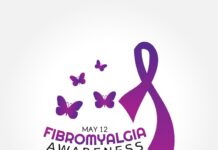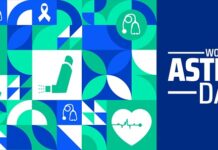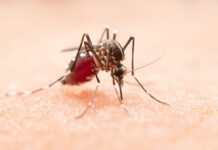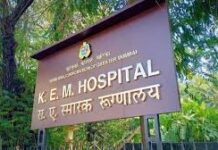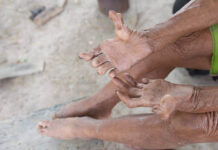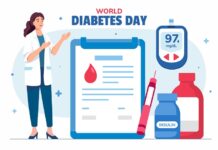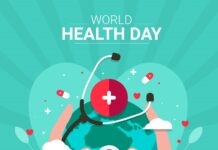Abstract
Breast cancer is one of the commonest cancers in women globally and specially in India. It leads to a considerable health care and economic burden, affecting both morbidity and mortality. October is observed as breast cancer awareness month. Screening is the most beneficial method of early diagnosis which enables timely intervention and treatment. Unfortunately, rate of screening in India is low as compared to western countries. This is due to barriers and challenges including population size, socio-cultural diversity, lower access to specialty care, and economic limitations which need to be overcome. Therefore, a risk based targeted approach by improving awareness and recommending screening at the primary care level with family physicians rather than a mass age/gender-based screening approach may be more relevant in India to help build a firm foundation for breast cancer screening, and improving its efficiency and benefits.
Keywords: Breast cancer, screening, mammography, primary care, family physician.
Introduction
October is observed as Breast Cancer Awareness Month. Breast cancer occurs in every country in the world, and was the commonest cancer in women across 157 countries in 2022.1 Across the world, annually, over 1.5 million women (25% of all women with cancer) are diagnosed with breast cancer.2 Interestingly, global estimates reveal striking inequities in the breast cancer burden and death rate according to level of human development. In countries with a very high Human Development Index (HDI), 1 in 12 women will be diagnosed with breast cancer in their lifetime and 1 in 71 women will die of it. In contrast, in countries with a low HDI; only 1 in 27 women will be diagnosed with breast cancer in their lifetime and 1 in 48 women will die from it.1
Risk factors
Certain factors have been known to increase the risk of breast cancer including older age, family history, radiation exposure, obesity, high dietary fat intake, abuse of alcohol or tobacco, reproductive history (early menarche, late menopause, late age at first pregnancy and low parity), and those on oestrogen based postmenopausal hormone replacement therapy.1,2 However, roughly half of all breast cancers occur in women with no specific risk factors other than age (>40 years). Breast cancer can occur at any age after puberty but rates are far higher in later life. A quarter of breast cancer patients may give family history and importantly, women with one first-degree relative and those with two or more first-degree relatives with breast cancer have a 1.75- and 2.5-fold higher risk respectively of developing breast cancer than women without any affected relatives.2
More than 60% of women who inherit a harmful mutation in BRCA1 or BRCA2 gene can develop breast cancer during their lifetime, compared to 12.5-13% in general population.3 Among women diagnosed with breast cancer, those with BRCA1 or BRCA2 mutation have an increased risk of developing cancer in the opposite breast in the future. About 30%–40% of breast cancer survivors with inherited BRCA1 mutation and 25% with inherited BRCA2 mutation develop contralateral breast cancer by 20 years after their first breast cancer diagnosis, compared with about 8% of those in the general population. Other known genetic associations include PALB2 mutation increasing breast cancer lifetime risk to 35-53% as against 12.5-13% in general population, overexpression of HER2 detected in about 20% of primary breast cancers, and overexpression of c-Myc predominantly observed in the high-grade, invasive stage of breast carcinomas, not seen in benign tissues.2
Screening Recommendations
The majority of guidelines recommend mammographic screening as the primary screening modality for an average-risk women with annual for women aged 40-54 years or 2-yearly mammogram for women aged 55 years and above.4 Adult women of all ages are encouraged to perform breast self-exams once a month to become familiar with their normal breast anatomy.
The U.S. Preventive Services Task Force (USPSTF) and American Academy of Family Physicians (AAFP) recommend against teaching average-risk women of 50-74 years, to perform breast self-examinations, and recommends biennial screening mammography for them.5 However, there is no strong evidence supporting a net benefit of mammography screening in average-risk women 40 to 49 years of age, so individualized decision-making in these women may be recommended. For average-risk women 75 years and older, the USPSTF and AAFP conclude that there is insufficient evidence to recommend screening, but the American College of Obstetricians and Gynecologists and the American Cancer Society state that screening may continue depending on the woman’s health status and life expectancy.
A breast MRI along with mammogram may be advised only to screen women who are at high risk of getting breast cancer (personal history of pre-cancerous lesions and/or breast cancer; family history of breast cancer; known genetic predisposition of breast cancer; history of chest radiation therapy; and dense breasts seen on mammogram). Those with strong self or family history of breast or ovarian cancers or known mutation in the BRCA genes in a close relative may be advised genetic testing with blood/saliva sample. Ultrasound imaging of the breast can help diagnose breast lumps or other abnormalities found during a physical exam, mammogram, or breast MRI, or screen those with dense breasts (which can increase cancer detection but also false-positive results).
Role of the Physician
As screening remains the cornerstone of prevention and early diagnosis, the family physician or the primary care physician can play an important role here. Surveys in developed countries have studied physician attitudes towards breast cancer screening.
Canada, a questionnaire survey was conducted to determine the family physicians’ attitudes and behaviour toward breast awareness, and breast cancer screening methods by mammography and breast self-examination, in women aged 40 to 49 at average risk of breast cancer.6 The response rate was 55%, and 46% of all surveyed family physicians offered screening mammography to women aged 40 to 49 who were at average risk of breast cancer. Although 40% of physicians did not think breast cancer screening was necessary for women aged 40 to 49, 62% indicated that they would offer screening if their patients requested it. Physicians’ reasons not to offer screening included no evidence of decreasing breast cancer deaths (63%), grade A recommendation to screen women starting at age 50 and not at age 40 (25%), and the harms of screening outweighing the benefits (19%). Physicians’ reasons to offer screening included patient request (55%), personal clinical practice experience or recommendations from key opinion leaders (27%), and guideline recommendations (18%). Breast self-examination was not recommended by most physicians (74%), yet most encouraged women to practise breast awareness and self-examination (81%).
In a survey in the USA, questionnaires were mailed to primary care providers with a 52.3% adjusted response rate, to examine associations between physician attitudes and screening recommendations.7 Physicians with increasing potential regret had higher odds of recommending mammography to younger (Odds ration – OR 8.68) and older women (OR 4.62), while increasing concern for patient-related hazards was associated with decreased odds of recommending screening to older women (OR 0.68). Physicians were more motivated by potential regret in recommending screening for younger and older women than by concerns for patient-related hazards in screening. Addressing physicians’ most salient concerns, such as fear of missing cancer diagnoses and malpractice, may present an important opportunity to improving delivery of guideline-based cancer screening.
Compared to high screening rates in the west, India has alarmingly low rates of screening with only 0.9% women having ever undergone a breast examination for breast cancer detection.8 The highest percentage of women screened for breast cancer was in Tamil Nadu (5.6%). The Ministry of Health and Family Welfare has published Operational Guidelines for three of the most commonly occurring cancers in India: breast, utero-cervix, and oral cancer: National Programme for Prevention and Control of Cancer, Diabetes, Cardiovascular Diseases and Stroke (NPCDCS). The guidelines aim to enumerate the population and utilize electronic health cards to carry out population-based screening once every five years.
Government and non-governmental organizations (NGOs) funds have helped to offer free-of-cost mobile screening camps.9 These camps address major barriers of cost and access but also have challenges of variable population heterogeneity in terms of residential status, socio-economic status (SES), and access to follow-up care facilities. Therefore, involvement of the family physician is important in overseeing mobile screening camps, and guiding people on breast cancer awareness, risk factors as well as breast self-examination in their clinic, along with appropriate recommendations for follow up and mammography.
The breast cancer scenario in India is concerning and needs efforts starting from the foundation of primary care. The age-standardised incidence rate in women of breast cancer in India increased by 39% from 1990 to 2016, with the increase observed in every state of the country.10 The survival rate of patients with breast cancer is poor in India as compared to Western countries due to earlier age at onset, late stage of disease at presentation, delayed initiation of definitive management and inadequate or fragmented treatment, and therefore in accordance with the World Cancer Report 2020, the most efficient intervention is early detection and rapid treatment.11 Organised screening programmes provide screening to an identifiable target population and use multidisciplinary delivery teams, coordinated clinical oversight committees and regular review by a multi-speciality evaluation board to maximise the benefit to the target population. Screening strategies are moving towards a risk-based approach rather than a broad age/gender-based recommendation. To use this risk-based approach, India needs to assess risk factors and incorporate this information into breast cancer screening.10
A recent study from Mumbai reported that clinical breast examination conducted every 2 years by primary health workers significantly down-staged breast cancer at diagnosis and led to a significant reduction of nearly 30% in mortality in women aged ≥ 50.12 Mammography sensitivity has been reported to vary from 64% to 90% and specificity from 82% to 93%. However, Indian women have more dense breasts, and there is a lack of adequate mammography machines and trained manpower. This may result in false positives and over-diagnosis, so mass-scale routine mammography screening is not a favoured option for a transitioning country like India, and the role of family physicians becomes important for individualized target approach. Though breast self-examination is not accepted as a general early detection method globally, this technique, if used diligently and skilfully, can serve as a useful adjunct to at least making the woman aware of her normal breast. Understanding India-specific differences by utilising genomics may enable the identification of women at high risk of developing cancer, where targeted screening may be cost-effective.10
Conclusion
Breast cancer is one of the commonest cancers in women globally and specially in India. Appropriate screening is the best and recommended method of prevention, early diagnosis, timely intervention and reducing mortality. The rate of screening in India is far lower than in western countries, and socio-cultural diversity, dense breasts, lower and non-uniform access to specialty care, and economic limitations are notable challenges. Therefore, a risk based targeted approach through improving awareness and screening recommendation at the primary care level and with family physicians can help build a firm foundation to improve efficiency and benefits of breast cancer screening in India.
References
- Breast Cancer Factsheet. WHO [Internet]. Updated March 13, 2024. Available from https://www.who.int/news-room/fact-sheets/detail/breast-cancer
- Sun YS, Zhao Z, Yang ZN, Xu F, Lu HJ, Zhu ZY, Shi W, Jiang J, Yao PP, Zhu HP. Risk Factors and Preventions of Breast Cancer. Int J Biol Sci. 2017 Nov 1;13(11):1387-1397.
- NIH, National Cancer Institute [Internet]. BRCA gene changes: Cancer Risk and Genetic Testing. Updated July 19, 2024. Available from https://www.cancer.gov/about-cancer/causes-prevention/genetics/brca-fact-sheet#:~:text=Testing%20for%20inherited%20harmful%20changes%20in%20BRCA1%20and%20BRCA2%20may,that%20are%20present%20in%20saliva.
- Ren W, Chen M, Qiao Y, Zhao F. Global guidelines for breast cancer screening: A systematic review. Breast. 2022 Aug; 64:85-99.
- Khan M, Chollet A. Breast Cancer Screening: Common Questions and Answers. Am Fam Physician. 2021;103(1):33-41
- Smith P, Hum S, Kakzanov V, Del Giudice ME, Heisey R. Physicians’ attitudes and behaviour toward screening mammography in women 40 to 49 years of age. Can Fam Physician. 2012 Sep;58(9):e508-13.
- Radhakrishnan A, Nowak SA, Parker AM, Visvanathan K, Pollack CE. Linking physician attitudes to their breast cancer screening practices: A survey of US primary care providers and gynecologists. Prev Med. 2018 Feb;107:90-102.
- Gopika MG, Prabhu PR, Thulaseedharan JV. Status of cancer screening in India: An alarm signal from the National Family Health Survey (NFHS-5). J Family Med Prim Care. 2022 Nov;11(11):7303-7307.
- Sekar P, Ghosh S, Dhillon P, Shridhar K. The dynamics of breast cancer screening approaches in urban India: An ethnographic study from Delhi, SSM – Qualitative Research in Health, 2022; 2:100135. ISSN 2667-3215.
- Mehrotra R, Yadav K. Breast cancer in India: Present scenario and the challenges ahead. World J Clin Oncol. 2022 Mar 24;13(3):209-218.
- International Agency for Research on Cancer. World Cancer Report [Internet]. 2020 [cited 4 April 2021]. Available from: https://www.iarc.who.int/cards_page/world-cancer-report/
- Mittra I, Mishra GA, Dikshit RP, Gupta S, Kulkarni VY, Shaikh HKA, Shastri SS, Hawaldar R, Pramesh CS, Badwe RA. Effect of screening by clinical breast examination on breast cancer incidence and mortality after 20 years: prospective, cluster randomised controlled trial in Mumbai. BMJ. 2021;372:n256



